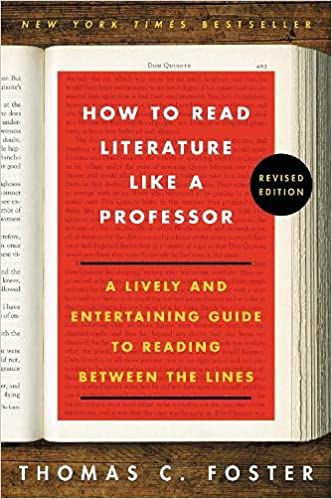While reading a classic I always feel that I am missing so many things. I read and listen to reviews of so many English literature students and I keep wondering how are they able to find these hidden layers. How I couldn’t see it?
So, when I hear about this book, I have to read it for myself. And I guess that’s one of the best decisions I ever took. I still can’t decode all the layers of the book, but I am pretty sure my experience of reading literature has increased manifold after reading this book.
What I have learnt from this book is that you get better at decoding and understanding these layers with more you read. And I hope to keep getting better.
Below is a summary from the book that I have captured both for you guys and for my reference in future.
- Every trip in literature is a quest. It can be characterized by 5 things: a quester, a place to go, a stated reason, challenges, and the real reason. And the real reason is always self-knowledge.
- Whenever there is a scene of eating together, it always explores the intimate relationship between characters, often an act of Communion
- The ghosts and vampires are never only about supernatural elements. It usually symbolizes someone who grows in strength by weakening someone else. Even if the book is not about vampires you can still identify such characters.
- There is no wholly original work of literature. The more you read, the more you can derive parallels and analogies, deepening your further understanding of the novel.
- You will find references from Shakespeare throughout.
- Or, the Bible, especially the early 20th-century literature.
- Fairy tale references (in a subtle way) is also a common practice in literature
- Also multiple references to Greek and Roman mythology. Finding such references make our experience of literature deeper, richer, and more meaningful.
- Weather is always symbolic. If it raining, it could be a plot device to huddle people together, or for atmospherics, denote misery, or as a cleansing tool for the characters, or representing spring as new growth or death as irony. Fog usually denotes confusion. Snow can be clean, stark, warm paradoxically, inhospitable, inviting, playful, suffocating, or filthy.
- Characters are not people, but a product of writers’ and readers’ imagination. There are round characters and flat characters which only exist as a plot device. The trick is to believe in them as a reader and to recognize the unreality as a critic.
- Violence, accidents, and misfortunes are never literal in literature.
- Almost everything can be symbolic. In general, a symbol can’t be reduced to mean only one thing. Use questions, experience, and pre-existing knowledge to decode it.
- You can almost always find politics of that time seeping into the literature.
- Christ figures are present everywhere.
- Flying usually represents freedom.
- There are a lot of things that can stand for sex in literature.
- And when they are talking about sex, it’s never about sex. If it is purely about sex then the word for it is pornography.
- Drowning and resurrecting, or even getting wet itself might symbolize baptizing.
- Geography and seasons are also widely used to represent a theme, plot, revelation, or as a symbol.
- Any defects or scars or marking on the character are symbolic. It stands as an indicator of the damage life inflicts. Remember Harry Potter?
- The blindness of character is never only about physical sight
- Any sort of illness is symbolic or metaphorical. Fever could represent the randomness of fate, the harshness of life, the unknowability of the mind. The heart has always been a symbolic repository of emotions, so pay attention to heart disease too.
- Don’t read-only with your eyes. There are often references to the time frame in which it is written.
- There is no definite list of symbols and what it represents. You discover new symbols and it’s meaning as you read along
- If the author defies you with any symbol, mostly he is trying to present an irony.

Be First to Comment